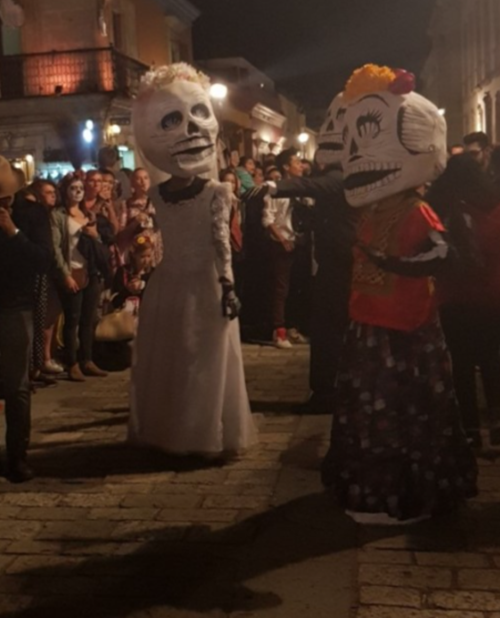Day of the dead
Let’s write down the traditional Mexican festival, the Day of the Dead. It is also said to be a day for the dead.
The meaning of the day of the dead
Mexico holds a national rite once a year. It is said that even the living will become skeletons on this day. It is not difficult to see adults, children, and even domestic puppies walking around dressed up as skeletons. Skeletons dance and sing in the streets and have a good day.
In 2008, it was inscribed on the UNESCO World Heritage List and recognized for its social function, spirituality, and value to indigenous Mexican communities’ daily lives.
Day of the Dead stems from a long tradition of Native Mexicans before the Spanish conquest to offer sacrifices to the goddess of porridge, who presides over the afterlife. Day of the dead merged all Saints’ Day feasts and All Souls’ Days to take their place as they are today.
The male skull is called “Catrin,” and the female head is called “Catrina.” The meaning behind this skull wearing colorful clothes is to enjoy it splendidly even after you die, just like the fancy clothes you are wearing.
Day of the Dead is a tradition for Mexicans to offer sacrifices to the goddess of death. You can get a glimpse of how Mexicans treat porridge. Because we accept death as a providence of nature and believe that there is an afterlife, it is not so sad to die.

Day of the Dead and Halloween
On Day Dead in Mexico, you dress up as a bone monster and as a lame boy with a blood body. Also, they dress up for zombie and monster horror movies. Mexico City There is an event called “Zombie Walk” held in Reforma to celebrate the Day of the Dead. Over a thousand people dressed as monsters occupy the main street and march for about two hours. Halloween Day and the date overlap, so the atmosphere is similar to Halloween Day.
